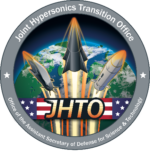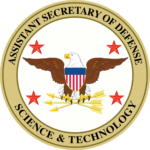Are there membership dues?
No.
Who can be a UCAH member?
UCAH membership is open to domestic universities, with participation limited to U.S. citizens. The United States Government may clear and authorize foreign participation from Australia, Canada, New Zealand, and the United Kingdom prior to membership on a case-by-case basis. Non-voting engagement (affiliate membership) by industry and other entities, such as national labs, UARCS, and FFRDCs is permitted by the contract agreement with the U.S. Government. Membership is on the UCAH website and updated regularly.
What is be the structure of the UCAH?
The UCAH will be managed by a Governance Board (GB) and administratively supported by TEES management and security with Government oversight.
What are the protocols for handling counterintelligence concerns and/or targeting of the research by foreign entities?
Robust security protocols will be implemented in the UCAH through the Texas A&M University System (TAMUS) Research Security Office (RSO).
Is there a lead counterintelligence agency supporting the UCAH?
Any security concerns related to UCAH should be addressed to the TAMUS/RSO ([email protected]).
How will proposals be solicited?
Request for White Papers (RWPs) and Request for Prototype Proposals (RPPs) will be released at least annually.
How do I submit a proposal?
Proposal submission will be conducted utilizing the UCAH website. After creating an initial account by using University AOR Proposal link on the Project Call page, proposal teams can upload proposal documents. You should verify that the person authorized to submit proposals for your organization has completed registration well in advance of the submission deadline. To apply for grants on behalf of your organization, you will need the Authorized Organizational Representative (AOR) role. Proposal submissions cannot be accomplished before your organization is fully registered. The portal is the single point for submission.
What is the process with which the UCAH will solicit proposals?
The Texas A&M Engineering Experiment Station (TEES) will distribute solicitation documents to UCAH members.
What are the criteria for submission selection and is industry and/or national laboratory participation encouraged in selection criteria?
Selection criteria will be available in the RWP and RPP. Teaming on research projects is encouraged.
What are the technical areas in the RWPs and RPPs?
The six technical areas of focus for the UCAH, include materials, structures, and thermal protection systems; guidance, navigation, and control; air-breathing propulsion; hypersonic environments and phenomenology; applied aerothermodynamics and hypersonic systems; and lethality and energetics.
The cross functional technical areas of focus, include physical, information and design sciences; advanced projects and prototypes; systems engineering, test and evaluation; manufacturability; and outreach & workforce development.
How will consortium research topics be selected? What will be the decision- making process for selecting and funding projects? Will industry and national laboratories have input and if so, how would that process work?
The Government Integrated Product Teams (IPTs) will provide solicitation topics with input from UCAH. The Government makes funding decisions. The role of the industry and national labs in this process will be determined by the government.
What are the technical specifics and/or target/metrics for sponsored research projects?
Contact the technical area leads. Information on technical area leads will be made available on the UCAH website.
What is the timeline for the consortium and potential RFPs?
Schedule will be posted on the UCAH website.
How can industry and national laboratories be involved in and engage the UCAH?
The UCAH will establish both an Industrial Advisory Board (IAB) and a National Laboratory Advisory Board (NLAB). Many levels of engagement are envisioned, including, but not limited to, teaming with universities on proposals/projects and UCAH events (e.g., Consortium Industry Days, Project Industry Days, Career and Internship Fairs).
What is the primary function of the IAB and NLAB?
The IAB and NLAB will advise the UCAH on pressing and complex technical problems in hypersonics, ensure the identification of new technologies and new applications of technology in hypersonics, and identify, encourage and facilitate the leveraging of activities between industry, national laboratories, and the UCAH for the benefit of the nation in hypersonics.
How will membership on the National Laboratory Advisory Board (NLAB) be decided?
TEES and the Interim Governance Board of the UCAH will create a UCAH External Board Committee (EBC) to establish and engage an Industrial Advisory Board (IAB) and a NLAB.
Is there a cost associated with IAB and NLAB membership?
No. IAB and NLAB membership is free.
Are non-university partners (industry, national laboratories, ffrdc’s) allowed to compete for funding on the requests for prototype proposals (RPPs) and requests for white papers (RWPs) released by the UCAH?
Non-university partners are welcome to submit proposals to RWPs and RPPs as subcontracts to a university UCAH member.
What are the technical areas in which the requests for prototype proposals (RPPs) and requests for white papers (RWPs) will focus?
The six technical areas of focus for the UCAH include: materials, structures, and thermal protection systems; guidance, navigation, and control; air-breathing propulsion; hypersonic environments and phenomenology; applied aerothermodynamics and hypersonic systems; and lethality and energetics. The cross functional technical areas of focus include: physical, information and design sciences; advanced projects and prototypes; systems engineering, test and evaluation; manufacturability; and outreach and workforce development.
How will IAB and NLAB members be selected, and what will their role be?
To be determined by UCAH EBC.
How many industry and national laboratory advisors will be selected for the IAB and NLAB?
To be determined by UCAH EBC.
What would be the time commitment for IAB and NLAB members?
To be determined by UCAH EBC.
Will the IAB and NLAB, once selected, be allowed to set the metrics and technical “gates” for the progress of the individual project(s)?
The Government will monitor progress on projects.
What is the anticipated business rhythm of the consortium from an industry engagement perspective (daily, weekly, monthly, quarterly, annually)?
In addition to IAB and NLAB meetings and research project teaming, frequent UCAH events will take place including, but not limited to, Consortium Industry Days, Project Industry Days, and Career & Internship Fairs.
What will be the relationship between UCAH, DoD, and industry and national laboratories to ensure “handoff” and transition of critical technologies?
TEES and the UCAH will develop a UCAH Technology Transitions Committee (TTC) to engage the membership, DoD, IAB, and NLAB will develop technology transition plans.
How can industry and the national laboratories engage in UCAH workforce development activities?
The UCAH Outreach and Workforce Committee (OWC) will develop plans for outreach, inclusion, and workforce development. Annual Career and Internship Fairs will be held.
How can industry and national laboratories get involved with UCAH to highlight and market military value of these future warfighting capabilities to the right DoD decision-makers?
Teaming on research projects is encouraged in response to RWP and RPPs. Involvement in advisory boards and UCAH events is also highly encouraged.
What are the TEES terms and conditions for industry and national laboratory involvement in the UCAH?
TEES is developing the terms and conditions for affiliate UCAH members.
In addition to hypersonic research & development, what is the vision/plan for talent development, and hypersonic education curriculum?
The UCAH activities include deliberate recruitment and outreach, and new educational initiatives in hypersonics through an outreach and workforce development plan. Additionally, many UCAH members offer short courses for professional development, which provide another opportunity for workforce development. Through the IAB and NLA, industry and national laboratory participation in these planning efforts and with UCAH Industry Days, career and internship fairs, and other workforce development activities will be encouraged.
Can industry or national laboratories set up a program for graduate-level interns working in industry or national laboratories either part time or full time that are connected to work by UCAH?
Absolutely.
Can industry or national laboratories set up a program for interns to work at UCAH university facilities (or other UCAH members) doing hypersonic research specifically for industry or national laboratory problems?
Absolutely.
How do the National Laboratories engage in technology transition activities with the UCAH?
The UCAH Technology Transition Committee (TTC) will engage the membership, DoD, Industrial Advisory Board (IAB), and the National Laboratory Advisory Board (NLAB) to develop technology transition plans.
What type of events with UCAH host to support its mission?
UCAH will host various types of information exchange and events, including, but not limited to, Consortium Industry Days, Project Industry Days, and Career & Internship Fairs.
Will TAMU be publishing an event schedule or calendar?
Yes. This information will be made available on the UCAH website, which is coming soon and will updated frequently.
For the different technical areas, will there be separate coordination/ updates/reviews with subject-matter-experts in industry, national laboratories etc. for a specific technology?
Yes. Frequent Project Industry Days will be held.
Is there a kickoff/introductory meeting planned?
Yes. The first Consortium Industry Day will be held on December 2, 2020 and will be virtual and open to all.


